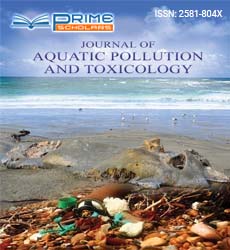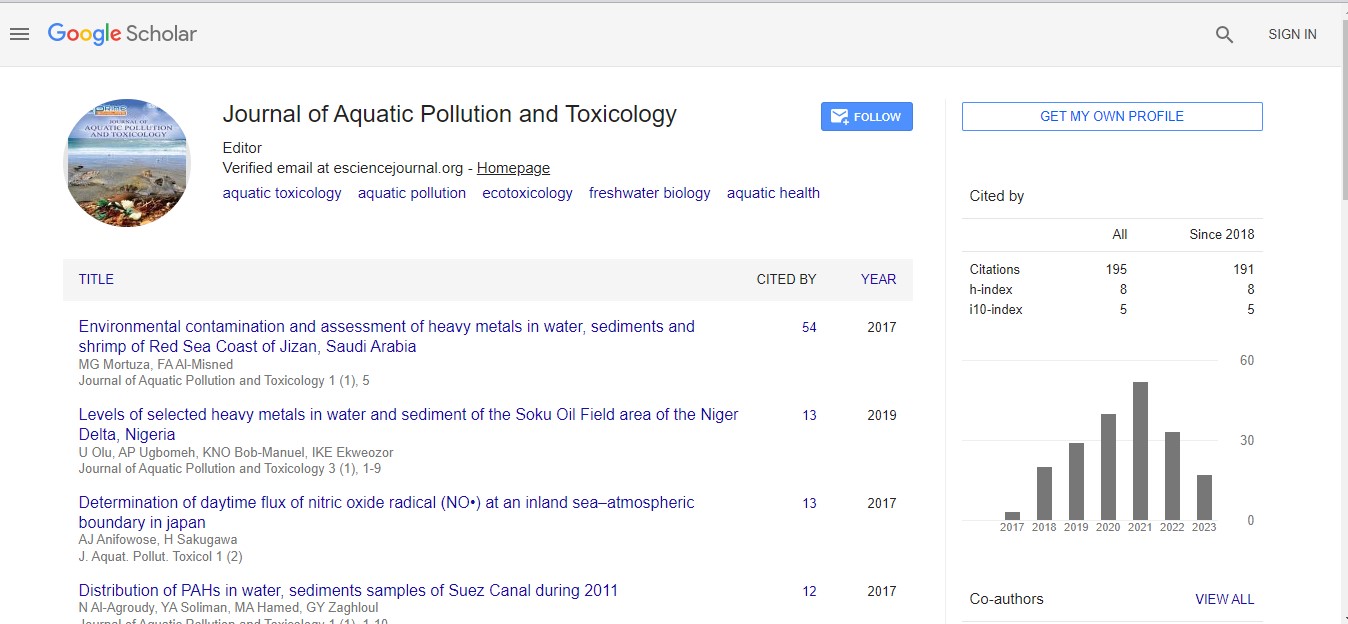Short Communication - (2022) Volume 6, Issue 5
Adverse Effect of Lead Poisoning Among Teenagers in Kuwait
Abdur Rahman*
Department of Biotechnology, Walchand Centre for Biotechnology, Solapur, Maharashtra, India
*Correspondence:
Abdur Rahman,
Department of Biotechnology, Walchand Centre for Biotechnology, Solapur, Maharashtra,
India,
Tel: 8541279630,
Email:
Received: 31-Aug-2022, Manuscript No. IPJAPT-22-14768;
Editor assigned: 02-Sep-2022, Pre QC No. IPJAPT-22-14768 (PQ);
Reviewed: 16-Sep-2022, QC No. IPJAPT-22-14768;
Revised: 21-Sep-2022, Manuscript No. IPJAPT-22-14768 (R);
Published:
28-Sep-2022, DOI: 10.21767/2581-804X-6.5.55
INTRODUCTION
Lead (Pb) is a toxic metal that has a very unpleasant and lasting
effect on health, especially in children. Due to its special physical
and synthetic characteristics, lead has been used in plumbing,
mining, and metal recycling. More recently it has been used in
paints, tubes, batteries, glass, chain covers and fuel. Due to its
endless use in numerous initiatives, lead is available in the current
situation and people are still exposed to it through food, water
and inhalation. Circulates through tissues (liver, kidney, heart,
etc.) and bones with time and constant openness, Pb accumulates
in bone, and when it is made with calcium from bone due
to odd calcium homeostasis or physiological conditions such as
pregnancy, it thus becomes a source of internal openness.
Description
Retention of lead in the human body depends on several factors.
Lead molecular size, orifice course (gastrointestinal plot or respiratory
packet), health status, health status, and human age. The
most common route of lead exposure in non-occupationally exposed
populations is ingestion. Overall, adults retain about 20%
of the lead they consume after feasting. Still, hunger retention
can increase to 60%-80%. In a child, after eating it is about half
and in starvation he can reach 100%. Lead lesions are rare infections
and, if present, can be easily misdiagnosed as a strong midsection
stomach pain. If you have a common cause of stomach
pain, lead damage should be considered. It is especially contraindicated
in patients who are pale and have liver dysfunction. Lead
discovery Damage basically corresponds to lead levels in blood
or urine. You should cut off contact immediately If you are using
lead and lead is found, use a metal-complexing specialist to treat
the lead emissions. it is harmed. Various forms of openness are
inhalation and, to a lesser extent, contact with the skin. Inhalation
and skin openness can generally be considered important
factors for the occupationally undressed population considered a
toxin in with increasing awareness of the harmful effects of lead
in adolescents, particularly neurotoxic levels, the appropriate
blood lead level (health limit) logically fell from his 60 μg/dL in the 1960’s to 10 μg for example, crabs, catfish, etc., which tend
to bio-magnify according to established pecking order. With reports
of adverse health effects below this safe limit, particularly
in children, the CDC set another limit at 5 μg/dL, which began arbitration
in 2012, and no lead for children in custody declared no
vulnerabilities. The debate continues, and recently some experts
in the field of lead toxicity have been fighting to reconsider this
level and suggest changing it to 3.5 μg/dl [1-4].
Conclusion
Kuwait’s economy is heavily dependent on the petrochemical
industry. It is located in a country where huge oil plants scorch
waste from the petrochemical industry and emit smoke into the
environment. It is also the country with the most serious transport
problems. In that capacity, Pb contamination in the air is supposed
to be high. The environmental Pb can get into the pecking
order which is viewed as a significant wellspring of Pb openness.
The desert environment of Kuwait works with the spread of suspended Pb particles in the air and soil into local locations. Air tests gathered from a few metropolitan areas of Kuwait showed
high Pb content in the particulate matter (PM). The 10 micron
size molecule PM (PM10) Pb content on normal was 12.67 mg/Kg,
which was 2.4 times higher than relating foundation Pb levels in
soil. Food can also cause lead release.
Acknowledgement
None.
Conflict of Interest
None.
REFERENCES
- Gharib L, Al Sarawi M (2018) Sulfur dioxide (SO2) and heavy metals accumulation in soils around oil refineries: Case study from three southern oil refineries in the state of kuwait. Am J Environ Sci 14(1):32.
[Crossref] [Google Scholar]
- Bu-Olayan AH, Thomas BV (2012) Dispersion model on PM₂.₅ fugitive dust and trace metals levels in kuwait governorates. Environ Monit Assess. 184(3):1731-1737.
[Crossref] [Google Scholar]
- Al-Awadhi J, Al-Helal A (2017) Elemental composition and concentration of atmospheric particulate matter in kuwait. Am J Environ Sci. 13(1):15.
[Crossref] [ResearchGate]
- Al-Dousari A, Majki K, Moustafa S, Al-Saleh E (2012) Effects of atmospheric lead on soil microbiota in kuwait. WIT Press. 162:11.
[Crossref] [Google Scholar]
Citation: Rahman A (2022) Adverse Effect of Lead Poisoning Among Teenagers in Kuwait. J Aquat Pollut Toxicol. 6:55.
Copyright: © 2022 Rahman A. This is an open-access article distributed under the terms of the Creative Commons Attribution
License, which permits unrestricted use, distribution, and reproduction in any medium, provided the original author and source
are credited.

